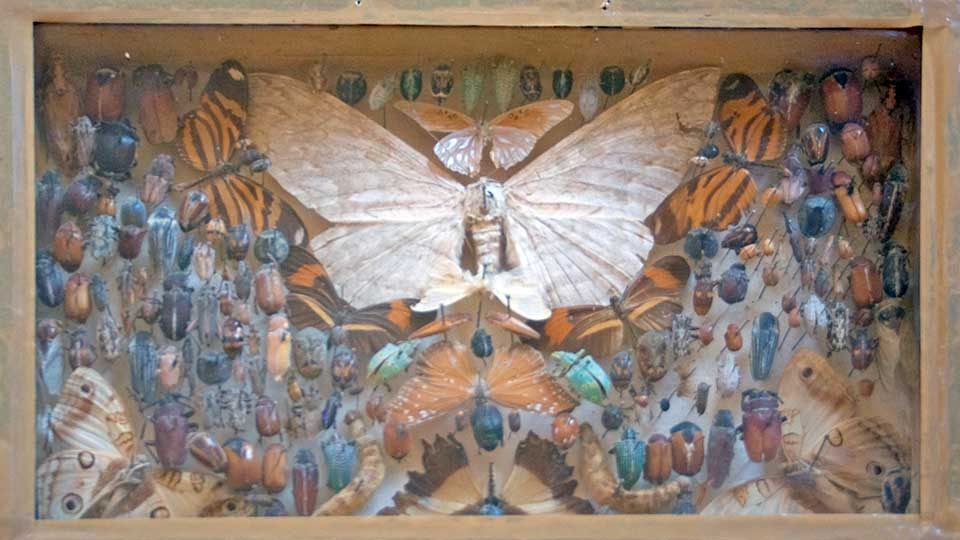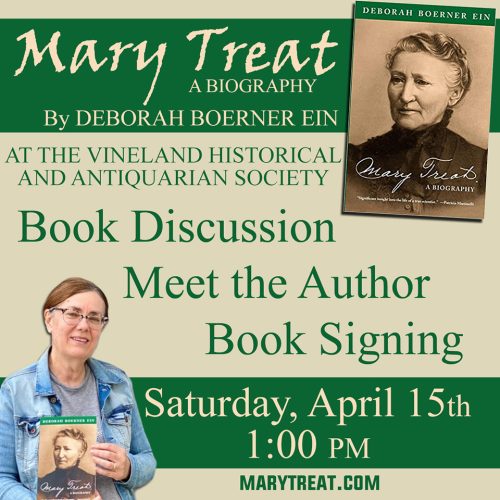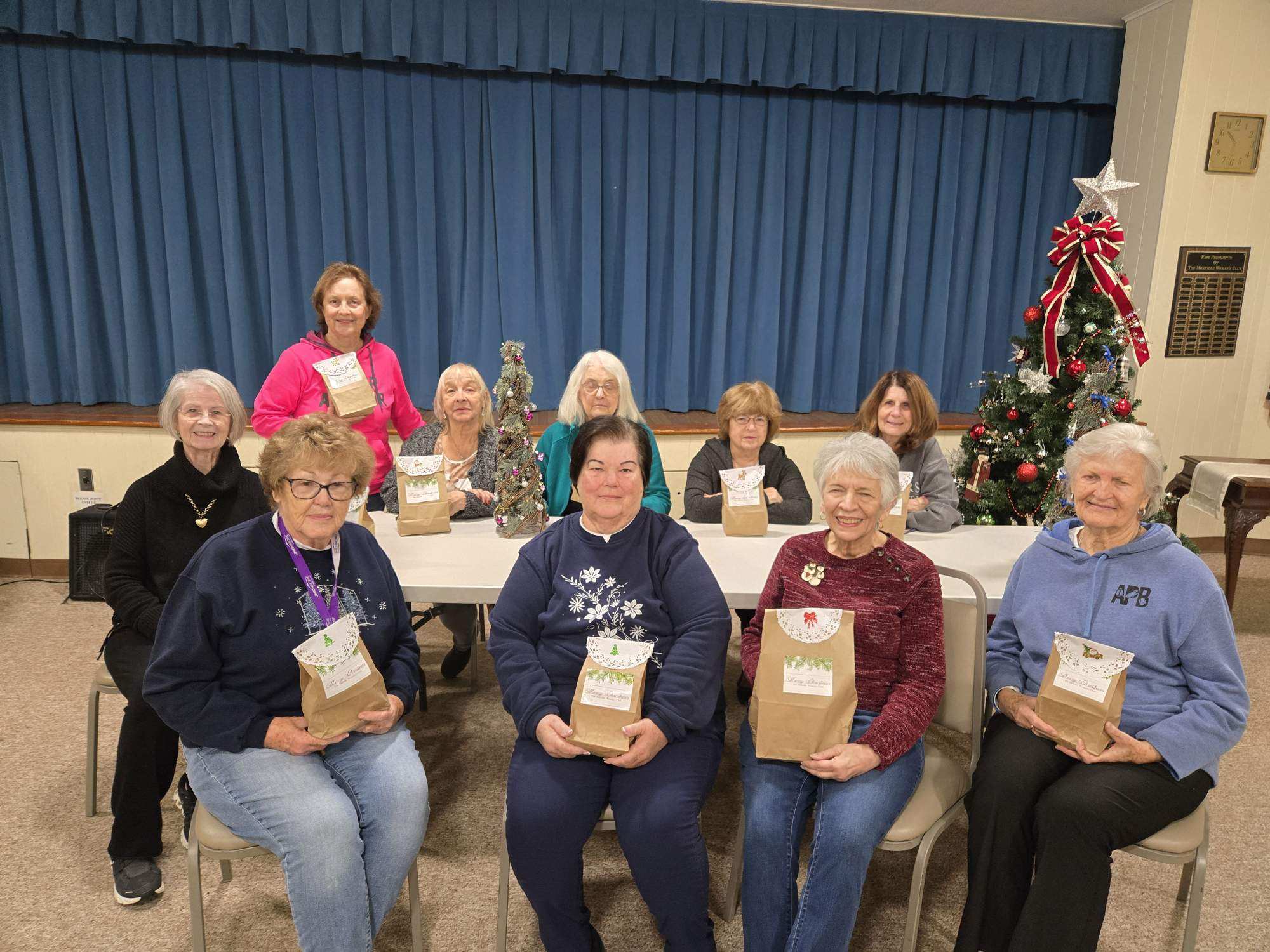Vineland Historical Society Loans Artifacts to New York Public Library

The Vineland Historical and Antiquarian Society (VHAS) is pleased to announce that items belonging to local naturalist Mary Treat are set to be included in an exhibition about Charles Darwin at the New York Public Library. Darwin was a noted scientist who first proposed a controversial theory of human evolution in the 19th century.
Objects from the Society’s archives that will be loaned to the library include a copy of Treat’s book, Home Studies in Nature, and handwritten research notes. The exhibit, organized by the library and Cambridge University, will be open to the public from May through July of this year.
It will offer insight into the life of Darwin and include copies of his most famous books and correspondence. During his lifetime, Darwin wrote and received more than 15,000 letters as part of a global network of scientists who studied the natural world.
Treat was one of the scientists who corresponded with Darwin and shared theories about the development of plants and insect life. She discovered different species of both that were named in her honor and wrote five books about her findings.
After collaborating with Darwin in research on carnivorous plants, she uncovered an error in his work concerning the way one of those plants lured its food. Darwin acknowledged her contribution in his book, Insectivorous Plants, published in 1875.
“We are honored to contribute some of the Treat material housed in our archives to this exhibit,” said Patricia A. Martinelli, Society curator. “She has brought a lot of positive attention to the Society in recent years.”
 In 2016, nationally known author Barbara Kingsolver visited VHAS to research Treat’s life for her novel, Unsheltered, which was published two years later. Her work inspired local author Deborah Ein to write Mary Treat: A Biography, which was published in November 2022.
In 2016, nationally known author Barbara Kingsolver visited VHAS to research Treat’s life for her novel, Unsheltered, which was published two years later. Her work inspired local author Deborah Ein to write Mary Treat: A Biography, which was published in November 2022.
Treat was born Mary Davis on September 7, 1830, in Trumansville, New York, and later moved with her family to Ohio. Her studies at a private girls’ academy sparked a lifelong interest in nature.
In 1863, she married Dr. Joseph Burrell Treat, a medical doctor who wrote and lectured on subjects including astronomy, physics, women’s rights and abolitionism. They moved to Vineland in 1868 to join the growing intellectual community in the town. In the years that followed, Treat detailed the behavior of a variety of insects and growth cycles of plants.
At 39, she published her first scientific article in the American Entomologist and Botanist. She also wrote articles for the The American Naturalist, American Journal of Science, and American Agriculturist. Her work also appeared in popular magazines such as Harper’s Monthly and Lippincott’s. During the next 28 years, she wrote 76 articles and five books. One book, Injurious Insects of the Farm and Field, originally published in 1882, was reprinted five times.
Treat separated from her husband in 1874 and supported herself with her writing. She began a lifelong correspondence with other scientists and naturalists, including Harvard botanist Asa Gray, Charles V. Riley, and Sir Joseph Hooker. These men were impressed by her knowledge of the natural world. Through her correspondence with Gray, Treat was introduced by letter to Darwin, telling him she was writing “at the request of their mutual friend and colleague.” Between 1871 and 1876, she and Darwin exchanged 15 letters.
Darwin later stated that her experiments were “by far the best, as far as known to me, which have ever been made.” In her later years, Treat became an active member of the Vineland Historical and Antiquarian Society, where she donated her research papers, her correspondence, and other records. In 1916, she moved to New York State with her sister. Treat died on April 11, 1923, at 92 years of age, in Pembroke, New York. She is buried at Siloam Cemetery here in Vineland. n
Stay tuned for information about a VHAS bus trip to the New York Public Library’s exhibition, “Charles Darwin: A Life in Letters.”








